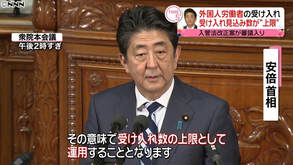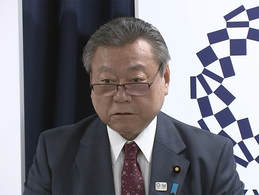 Source: navy.gov.au
Source: navy.gov.au The fact that this agreement has not yet been finalized has been a source of some frustration for those watching the progress of Australia-Japan strategic relations. Perhaps the best way to regard the slow pace in developments might be to remember that “good things come to those who wait”.
Nevertheless, both sides still had plenty to talk about over the 20 or so hours of the visit.
One particular item that was kept under wraps but later revealed during APEC was the Australia, the US, and Japan trilateral joint initiative on infrastructure funding for the Pacific. PM Abe also took the time upon arrival in Australia to travel to the Darwin Cenotaph to pay his respects and lay a wreath in memory of those who perished during Japan’s air raids on the city in February 1942. As was highlighted during the visit, this gesture followed on from a similar one he made at Pearl Harbour in 2016. Given Abe’s political background and heritage, he is perhaps the most qualified of any of Japan’s recent leaders to make this gesture, which was generally well received by both the Darwin community and Australia at large. Abe (or more correctly his wife Akie) also visited the memorial to the Fujita Salvage Operation of 1959 to 1961, located out the front of the Darwin Uniting Memorial Church, while the prime ministerial couple laid wreathes at the memorial to the crew of the I-124 submarine that was sunk outside the Port of Darwin one month before the air raid on the city.
The visit was certainly more memorable for the above events than for the equally as important but perhaps less attention-grabbing visit to PM Abe to the Ichthys LNG project, Japan’s largest overseas investment. This mammoth project, which is expected to continue to supply LNG to Japan for the next 40 years, is the figurehead of the Australia-Japan economic relationship at present, and has been vigorously promoted by the governments of both countries since the announcement of the project in 2012.
The only other event of note during the visit was a quick trip by PM Abe to greet the crew of the Japan Coast Guard Vessel “Echigo” during their inaugural training exercise with the Australian Border Force, along with anti-piracy maneuvers in Southeast Asian waters. This is an extension of similar visits that Japanese Coast Guard vessels have made around the region, and marks a welcome expansion in Japan’s security apparatus to reinforce the sovereignty of regional states.
The visit itself will primarily be remembered for the Darwin reconciliation gesture, and certainly had more to offer than a visit to Tokyo made earlier in the year by former PM Malcolm Turnbull (a visit that also promised a major announcement, only for it to turn into a standard PR opportunity replete with a visit to an SDF base, a first by an Australian PM, if I recall correctly). While it might be a while before the leaders of either country undertake any bilateral visits (given that Australia is expected to have a federal election by mid-May, the results of which could see a change in government) it was a good reminder of just how close the bilateral ties are between both nations and how these “middle powers” are acting on behalf of their own and partner nation interests to bring some stability to this part of the world.


 RSS Feed
RSS Feed